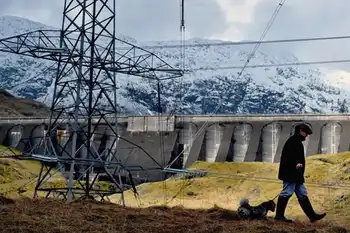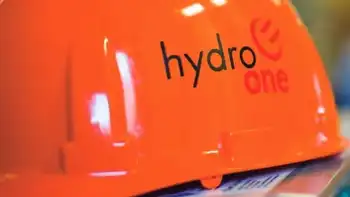Case against Enron bosses completed
HOUSTON, TEXAS - Federal prosecutors rested their fraud and conspiracy case March 28 against former Enron Corp. chiefs Kenneth Lay and Jeffrey Skilling and dropped four counts against them to streamline an already complicated case.
The defendants appeared undaunted after almost two dozen witnesses bolstered the government's claim that they committed crimes at the energy trading company before it sought bankruptcy protection in December 2001.
"We're looking forward to getting on the stand and getting our case out there — the positive case," Lay told reporters outside the federal courthouse in Houston.
Their defense teams will begin presenting their case in the premier trial to emerge from Enron's rubble, but other witnesses are likely to be overshadowed by the main event, when Lay and Skilling take the stand.
"We are anxious to get our story told," said lead Skilling lawyer Daniel Petrocelli, his client at his side.
Prosecutors declined comment, as is customary during a high-profile trial.
Lay and Skilling will enter the defense phase a little lighter because U.S. District Judge Sim Lake approved a government request to drop several charges against them for which it had presented no evidence. Two counts of securities fraud and one count of lying to auditors pending against Skilling were dropped, leaving 28 criminal counts against him; and a single count of securities fraud against Lay was dropped, leaving six in his case.
Lake denied routine requests from the defense for acquittal.
The dropped counts against Skilling stemmed from allegations the former chief executive signed a fraudulent quarterly report submitted to the Securities and Exchange Commission; lied about Enron's health during a first-quarter earnings conference call; and signed a statement to auditors that vouched for fudged financial statements.
The count against Lay that was dropped grew from allegations the company founder lied to analysts about Enron's finances during a conference call.
Lay also faces a separate case related to his personal banking. In one count of bank fraud and three counts of lying to banks, prosecutors allege he obtained $75 million in loans from three banks and then reneged on an agreement with the lenders that he wouldn't use the money to carry or buy Enron stock on margin. That case will be tried without a jury before Lake, beginning while jurors in the current Enron trial begin what are expected to be lengthy deliberations.
Prosecutors say Lay and Skilling repeatedly lied about the energy company's financial health when they allegedly knew accounting maneuvers propped up an image of success.
The government built its case on the recollections of witnesses, audiotapes of conference calls with Wall Street analysts and videotapes of employee meetings. It often lacked tangible proof such as e-mails, documents or notes. Neither Lay nor Skilling was known to use e-mail at Enron.
The two men counter that the only fraud at Enron was committed by a few employees who skimmed money for themselves from secret scams, including former Chief Financial Officer Andrew Fastow. They say they did nothing wrong, and attribute Enron's failure to negative publicity coupled with a loss of market confidence.
The government presented 22 witnesses since testimony began Feb. 1, which included eight former executives who have pleaded guilty to crimes, one with an immunity deal, one who settled regulatory allegations and three who said they voiced concerns about financial peril that fell on deaf ears.
"The government has really made its case that what Lay and Skilling said and were told in private were very different than what they were doing and saying in public. It really comes down to that," said Michael Wynne, a former federal prosecutor who has observed much of the trial.
Robert Mintz, another former federal prosecutor who has followed the trial, said each prosecution witness is intended to be viewed as a piece of a puzzle that when put together paints a "very damning portrait of these two defendants."
But, he said, "This is still a difficult case for prosecutors because there is no 'smoking gun' evidence. There are no bombshells. There's nothing that conclusively ties the defendants to a scheme to defraud the investing public," he said.
Petrocelli said the government's lineup offered only "glancing blows" and the defense case will present "hard facts."
"We're scrambling to get witnesses to testify, and it has not been easy," Petrocelli said. "You'll probably see more than the government called."
The defense teams have repeatedly complained that ex-Enron executives who haven't been charged with crimes are afraid to testify on behalf of Lay or Skilling for fear of being indicted. The judge has repeatedly offered assurances that no one would face government retribution for cooperating with the defense.
The defense teams originally had a witness list that exceeded 200 people and included former top executives who sold tens to hundreds of millions of dollars in stock. But many of those, including the one who made off with the most millions — former retail energy unit CEO Lou Pai, who sold nearly $300 million in stock before he quit Enron in mid-2001 — were expected to invoke their Fifth Amendment rights not to testify.
So the defense teams have pared their witness list to about 100, though only a fraction are likely to testify.
Petrocelli said former Enron Chief Accounting Officer Richard Causey is on the list, but was unsure if he would actually testify. Causey was slated to go to trial alongside Lay and Skilling until he defected from the unified defense after Christmas and pleaded guilty to securities fraud.
The government's highest profile and most anticipated witness was Causey's ex-peer, Fastow.
The ex-chief financial officer had no written proof that he and Skilling discussed Enron's use of his partnerships to help the energy company manipulate earnings, but insisted that they "committed crimes together" and Skilling egged him on, saying, ``Get me as much of that juice as you can."
Fastow also said Lay knew from discussions with him and others that Enron was in serious financial trouble by the fall of 2001, even as the company founder gave rosy reports of its health to investors and employees.
The defense teams gave Fastow repeated verbal beatings, highlighting how the ex-CFO skimmed money from Enron through other scams unknown to Lay and Skilling and roped his wife into his crimes, for which she served a year in prison. Fastow pleaded guilty to two counts of conspiracy in January 2004 and agreed up front to serve the maximum 10-year prison term.
As the government wound down its case, it left jurors with a taste of the large salaries Lay and Skilling raked in — almost $375 million between them — before the company collapsed.
Skilling earned more than $151.7 million from Enron Corp. from 1999 to 2001, the time span of the indictment. The 28 counts against him include 10 counts of insider trading, and those trades gained him more than $41 million.
In the same three years, Lay earned more than $222.8 million from the company.
Lay is not charged with improper stock sales. But prosecutors sought to show through their final witness, Enron accountant Joanne Cortez, that he enjoyed being able to borrow millions of dollars from Enron and repay the loans with company stock as the energy giant was sinking.
In August 2001, days after Skilling resigned as CEO and Lay resumed the role, he repaid a $4 million line of credit with Enron stock. A week after Enron reported massive third-quarter losses in October 2001, Lay's credit line was bumped to $7.5 million from $4 million. By the end of the year he had maxed it out, she said.
Cortez said she started compiling a spreadsheet of such transactions, which didn't have to be publicly reported until the next year.
"I thought it was improper," she said, though she conceded on cross-examination that she didn't know Lay used the line of credit to repay bank loans under orders from those lenders.
Lead Lay lawyer Michael Ramsey said outside of court it was a "unique situation" that the government ended its case with testimony that implies insider trading even though his client isn't charged with it.
"We've had a good trial," he said.
Related News

Clocks are running slow across Europe because of an argument over who pays the electricity bill
LONDON - Over the past couple of months, Europeans have noticed time slipping away from them. It’s not just their imaginations: all across the continent, clocks built into home appliances like ovens, microwaves, and coffee makers have been running up to six minutes slow. The unlikely cause? A dispute between Kosovo and Serbia over who pays the electricity bill.
To make sense of all this, you need to know that the clocks in many household devices use the frequency of electricity to keep time. Electric power is delivered to our homes in the form of an alternating current, where the direction…




